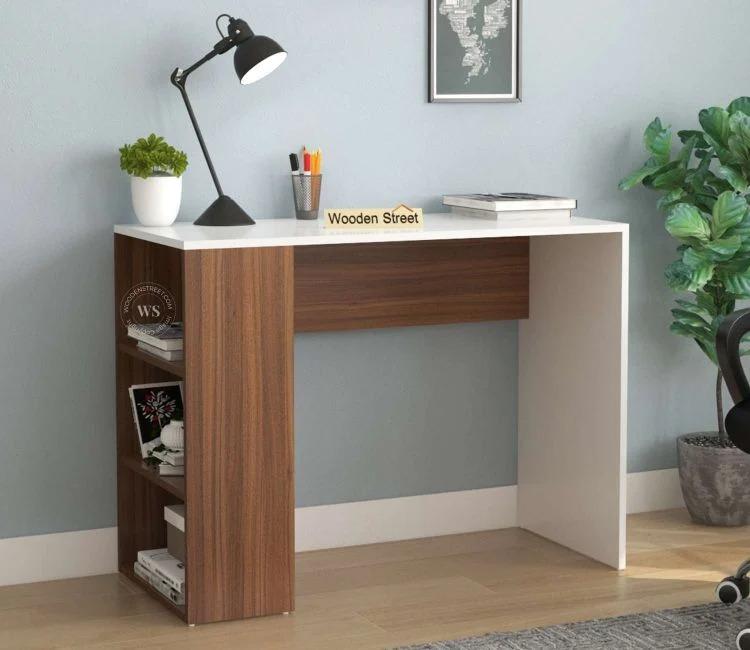Eco-Friendly Study Tables: Sustainable Materials That Support Smarter Futures

As conversations around climate change and environmental responsibility grow louder, the choices we make in our homes—especially for our children—matter more than ever. From the food they eat to the furniture they use, every decision shapes not just their lifestyle but also their values. That’s where eco-friendly study tables come in—smart, sustainable, and future-focused choices that support both academic success and planetary well-being.
A sustainable study table for students isn’t just about green materials; it’s a statement of intent—a way to align your child’s educational environment with eco-conscious values. In this article, we explore how choosing eco-friendly furniture for kids can create a healthier learning space while protecting the planet.
Why Go Eco-Friendly?
The average study table may contain toxic adhesives, synthetic laminates, and deforestation-sourced wood. These materials contribute to indoor air pollution, environmental degradation, and long-term waste. In contrast, eco-friendly study tables are made from renewable, recyclable, or biodegradable materials that are safe for both children and the Earth.
Benefits of Sustainable Study Tables:
-
Reduce exposure to harmful chemicals like formaldehyde and VOCs.
-
Use renewable materials like bamboo, reclaimed wood, or recycled metal.
-
Minimize environmental impact with responsible manufacturing processes.
-
Teach children the importance of eco-conscious living.
These study tables are built not just for durability, but for a smarter, cleaner future.
1. Bamboo: The Fast-Growing Champion
Bamboo is one of the most popular materials in sustainable furniture design—and for good reason. It grows rapidly, requires little water, and doesn’t need pesticides.
Why Bamboo Works:
-
Naturally anti-bacterial and durable.
-
Light yet strong—ideal for children’s furniture.
-
Adds a clean, modern look to any study space.
A bamboo study table supports both aesthetic appeal and eco-conscious functionality, making it a favorite among green parents and designers.
2. Reclaimed or Recycled Wood
Reclaimed wood offers a beautiful, rustic charm—and saves trees in the process. Sourced from old barns, boats, or buildings, this wood gets a second life as furniture.
Perks of Reclaimed Wood Tables:
-
Unique character with natural imperfections.
-
Zero deforestation impact.
-
Long-lasting and repairable.
By choosing reclaimed wood study tables, you're embracing the principle of reduce, reuse, recycle while giving your child a strong, meaningful work surface.
3. Recycled Metal Frames
Combining recycled steel or aluminum with wood or bamboo creates a sleek, industrial-inspired study table that is as durable as it is eco-friendly.
Eco-Metal Benefits:
-
Fully recyclable and often already reused.
-
Resistant to pests and corrosion.
-
Complements minimalist and modern interiors.
Using recycled metal frames lowers the carbon footprint of furniture production and supports a circular economy.
4. Non-Toxic Finishes and Adhesives
Even if the material is sustainable, the finish can make or break the eco-friendliness of a table. Traditional varnishes and adhesives may contain VOCs (volatile organic compounds) that release harmful toxins into the air.
Choose:
-
Water-based finishes with low or zero VOC content.
-
Natural oils or waxes that protect the surface without harmful chemicals.
-
Eco-certified glues (such as GREENGUARD or CARB-compliant products).
Safe finishes ensure that your green study space is not only kind to the planet, but also safe for your child’s health.
5. Modular and Long-Lasting Design
Sustainability isn’t just about materials—it’s also about how long furniture lasts. Many eco-conscious brands now offer modular study tables that adapt as your child grows.
Features of Sustainable Design:
-
Adjustable height desks that grow with your child.
-
Replaceable parts instead of throwaway pieces.
-
Minimalist, timeless design that doesn’t go out of style.
By avoiding short-lived trends and investing in durable, adaptable furniture, you're reducing waste and encouraging long-term thinking.
6. Certifications to Look For
When buying an eco-friendly study table, third-party certifications help you verify the sustainability claims.
Look for:
-
FSC (Forest Stewardship Council) – ensures wood is responsibly harvested.
-
GREENGUARD Certification – verifies low chemical emissions.
-
LEED Certified – relates to environmentally conscious building and design.
-
Cradle to Cradle Certified – evaluates products for sustainability and recyclability.
These labels ensure that your purchase is truly aligned with eco-conscious values.
7. Designing a Green Study Space at Home
Beyond the desk itself, you can complete your eco-friendly learning zone with other sustainable elements.
Green Design Tips:
-
Use LED lighting to reduce energy consumption.
-
Add indoor plants to purify air and reduce stress.
-
Choose organic textiles for cushions or seating.
-
Repurpose old containers for storage instead of buying new.
By designing a fully green study space, you create an environment that encourages healthy habits and environmental responsibility.
8. The Educational Impact of Eco-Friendly Spaces
Your child's environment plays a big role in shaping their mindset. Choosing an eco-friendly study table isn’t just a functional choice—it’s a teaching opportunity.
Lessons Learned Through Sustainable Design:
-
Understanding the value of conservation and natural resources.
-
Developing respect for craftsmanship and mindful consumption.
-
Building awareness about environmental impact and sustainability.
This kind of eco-conscious learning instills a sense of responsibility and global awareness—skills that are essential for the future.
Final Thoughts: Building Smarter, Greener Futures
In a world that’s facing mounting environmental challenges, making mindful choices at home can have lasting impacts. Choosing an eco-friendly study table is a simple yet powerful way to support your child’s health, foster a sustainable mindset, and reduce your environmental footprint.
Whether it’s made from bamboo, reclaimed wood, recycled materials, or finished with non-toxic coatings, your green furniture choice is an investment—not just in your home, but in the future of the planet.
Key Takeaways
-
Eco-friendly study tables are made from sustainable, non-toxic, and renewable materials.
-
Options include bamboo, reclaimed wood, recycled metal, and low-VOC finishes.
-
Certifications like FSC, GREENGUARD, and Cradle to Cradle ensure product authenticity.
-
Green spaces promote better health, concentration, and eco-awareness in children.
-
Modular and long-lasting designs reduce waste and support sustainable living.





